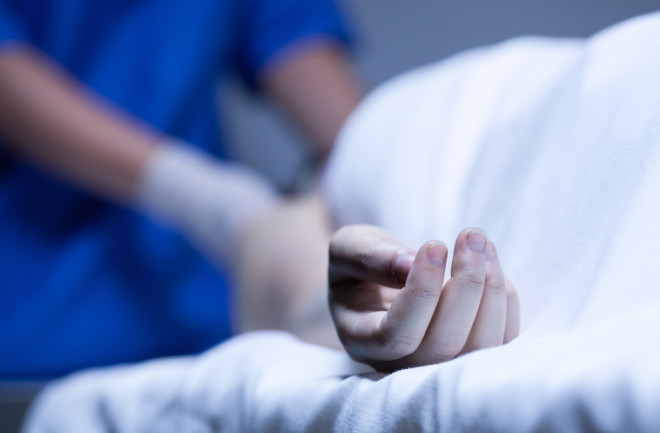The immediate aftermath of dying can be surprisingly lively. For the first few minutes of the postmortem period, brain cells may survive. The heart can keep beating without its blood supply. A healthy liver continues breaking down alcohol. And if a technician strikes your thigh above the kneecap, your leg likely kicks, just as it did at your last reflex test with a physician.
Death obviously ends your ability to experience existence. But the signs of life that persist within you — without you — also challenge any sense of self you had before.
Defining Death
It’s important to distinguish death from mere illness or injury, however severe. Being unconscious, or in a coma, or even in a persistent vegetative state are all potentially reversible. Death is not. The Uniform Determination of Death Act, a legal statute formulated in the early 1980s and since adopted, with minor adjustments, by all 50 states in the U.S. and the District of Columbia, defines the threshold as either “(1) irreversible cessation of circulatory and respiratory functions” — heart and lung failure — or “(2) irreversible cessation of all functions of the entire brain, including the brain stem” — brain death.
The question is: What keeps working without the brain, without the heart and lungs, or without all three?
Independent Pacemakers
The practice of modern organ donation has established how a brain-dead person might have remaining healthy body parts.
Without your brain, breathing stops and so does blood pressure regulation. Still, the heart and GI system have their own independent pacemakers, which both keep ticking for a time. These, in turn, let liver and kidney operations continue for a brief period before the organs are starved for blood. From death for one person, then, may come life-saving opportunities for others.
“Every heart transplant takes a heart from someone,” says Eelco Wijdicks, former chair of the division of critical care neurology at the Mayo Clinic and the author of Brain Death. “Of course that heart works. The heart that’s taken out is not dead as in ‘dead dead.’ ”
Even at the point of zero blood pressure — meaning, no circulation — electrical function persists. “You can do an EKG,” Wijdicks says, “and the EKG will show that there is still something firing.“
The Brain Without the Heart
Brain function after heart or lung failure is far more uncertain. Remnant blood pressure and respiratory drive may mean individual neurons in the brain stem keep firing.
Very quickly, however, inside the tight box of your skull, the brain cells that constituted your thoughts and memories start to swell without access to their blood supply. When pressure above or below breaches and destroys the brain stem, all possible activity ceases.
The good news is that no one witnesses their own brain damage occurring. “When your blood pressure drops precipitously, you become unconscious,” Wijdicks says. “You’re not noticing anything.”
Still, even after taking a person with no blood circulation off a ventilator, transplant surgeons wait as long as five minutes before operating. The pause is their way of guaranteeing that every last brain function is over, never to resume.
The Lazarus Sign
Most startling of the signs of life after death are involuntary movements mediated by the spinal cord. These include arms lifting, fingers flexing, and brief, slow upper-limb movements prompted by outside stimuli or a change in oxygenation.
Braindead patients awaiting transplant surgery can show a physiological motor response more than 24 hours after death, which sometimes surprises and scares even doctors. The rarest and most famous of such responses is the “Lazarus sign,” when someone’s arms rise briefly and then drop crossed on the chest.
This happens because certain neural pathways for common reflexes pass through synapses in the spinal column, not the brain, for faster reaction time, as in a hand yanked from a hot stove. In some cases, however, the living and dead react differently. When you’re alive, if a doctor strikes your heel with a piece of wood, your toe goes down. If you’re dead and the same thing happens, the toe goes up.
Last Breath
Even though the heart, brain, GI system, spine and other sources of our signs of life are semi-autonomous, their interconnections and interdependence trump all. Absent artificial support, when one goes, the others quickly follow.
After that point, death becomes palpable, says Mary Jane Nealon, a former oncology and neurotrauma nurse and the author of the memoir Beautiful Unbroken. For her, having accompanied hundreds of people on their deathbeds, the ultimate passing comes after the final exhalation — not via independent lung function, but when the body is moved for cleaning. There’s often an audible sigh as the last breath comes out. In that instant, in her experience, the whole room feels like “a sacred space.”
The sense of the person being a “self,” whoever that self was, recedes afterward. Following the final exhalation, says Nealon, “You can feel the body become a body.”
And there you go.

